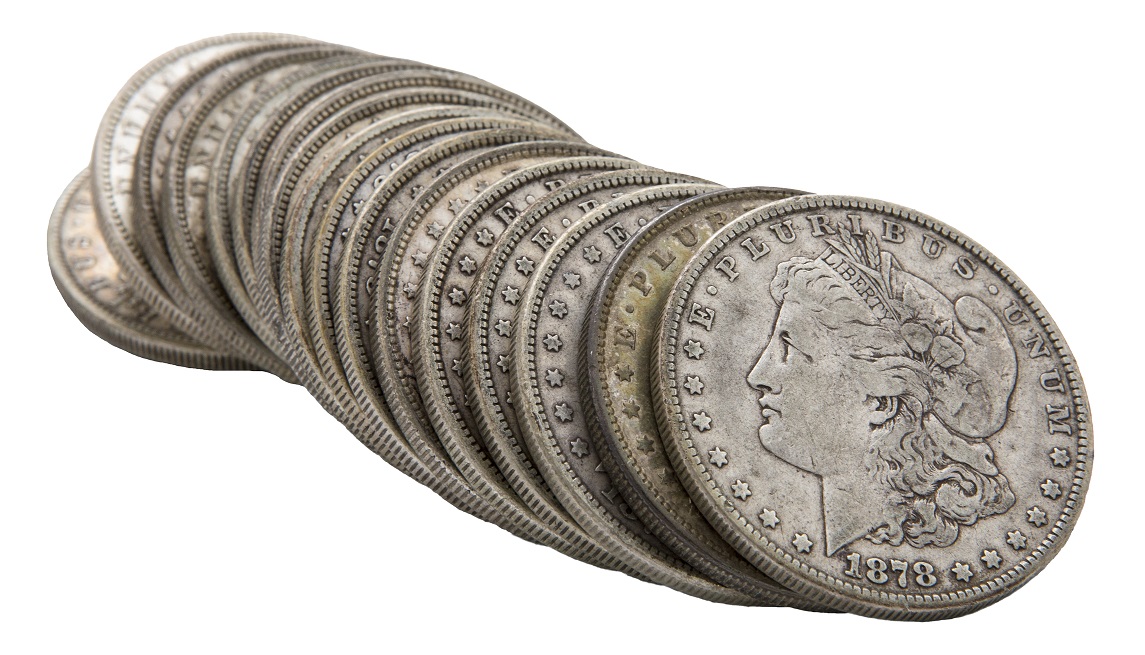
U.S. Silver Dollars
Though it is still the most circulated denomination in the United States, the dollar has taken on quite a different look from the original dollar coins produced in the United States Mint. Today, the dollar is a green bill popularly known as the “greenback,” but one of the most popular formats for the dollar in U.S. history was the silver dollar. You can still find silver dollars available as a collectible item or as an affordable option to expand your investment portfolio in silver precious metals.
Your Trusted San Diego U.S. Silver Dollar Supplier
At San Diego Coin & Bullion, we pride ourselves on being the San Diego coin destination for buying and selling U.S. Silver Dollars and other U.S. Silver coins. Whether you’re a collector, an investor looking to diversify your portfolio, or someone who appreciates the historical significance of silver dollars, our team is here to help. We offer a wide selection of silver dollars. Trust us to provide competitive pricing and expert guidance. Visit us today and discover the value and beauty of U.S. Silver Dollars!

Frequently Asked Questions about U.S. Silver Dollars
Investing in U.S. Silver Dollars offers several advantages. These coins contain a substantial amount of silver, providing exposure to the precious metal. Their historical significance and cultural value make them appealing to collectors, potentially enhancing their long-term worth. U.S. Silver Dollars have a dedicated collector base, driving demand beyond their silver content and potentially increasing their value. These coins are widely recognized and tradable, ensuring liquidity. Including them in an investment portfolio can diversify holdings, acting as a hedge against inflation and currency fluctuations.
However, it’s important to conduct thorough research, consider grading, rarity, and market conditions, and seek guidance from reputable dealers or numismatic experts when investing in U.S. Silver Dollars or any collectible coins.
The history of the U.S. Silver Dollar dates back to the late 18th century. The first official U.S. Silver Dollar, known as the Flowing Hair Dollar, was minted in 1794. It featured a portrait of Lady Liberty on the obverse and an eagle on the reverse. The design was later replaced by the Draped Bust Dollar in 1795, featuring a more refined depiction of Liberty.
One of the most iconic U.S. Silver Dollars is the Morgan Silver Dollar, named after its designer, George T. Morgan. First minted in 1878, the Morgan Dollar became the primary silver coin of the United States until 1904 when production ceased. It was then briefly minted again in 1921. The Morgan Dollar features Lady Liberty on the obverse and an eagle with outstretched wings on the reverse.
Another notable U.S. Silver Dollar is the Peace Silver Dollar. It was minted from 1921 to 1935 and was introduced to commemorate the end of World War I. The Peace Dollar depicts the profile of Lady Liberty wearing a radiant crown on the obverse and a perched eagle on the reverse.
Throughout history, U.S. Silver Dollars have witnessed various designs, mint marks, and minting periods. They hold cultural significance as symbols of American heritage and are highly sought after by collectors worldwide. Today, U.S. Silver Dollars continue to be valued for their historical importance, precious metal content, and numismatic appeal.
The United States has produced several types of silver dollars throughout its history. These include the Flowing Hair dollar (1794-1795), Draped Bust dollar (1795-1804), Seated Liberty dollar (1840-1873), Trade dollar (1873-1885), Morgan dollar (1878-1904, 1921), Peace dollar (1921-1935), and Eisenhower dollar (1971-1978). Each type features distinct designs and historical significance, with the Morgan and Peace dollars being among the most popular and widely collected by numismatists.
One common method to determine if a coin is silver is to check its composition using a magnet. Silver is not magnetic, so if a coin is attracted to the magnet, it likely contains little to no silver. Additionally, you can examine the coin’s edge for a silver coloration or conduct a specific gravity test, comparing the coin’s weight to its volume to identify silver content accurately. Bring your coins into our San Diego shop and we can help identify if they’re silver or not.

